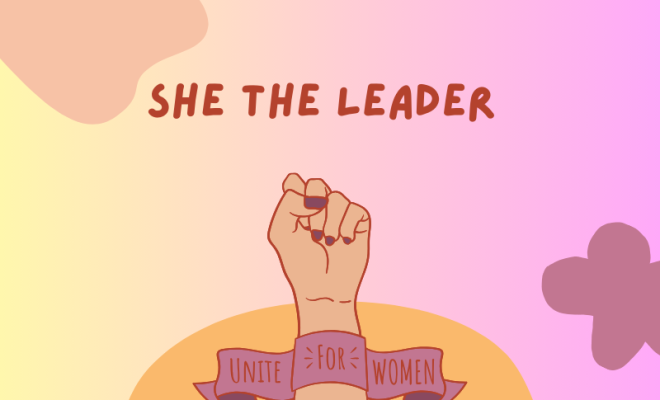Evaluating Women’s Political Progress in India: An Overview of the 2024 General Election

The term political participation is a term that has a wide meaning, it is not only about the ‘right to vote’, it is also related to the ability to be involved in the decision making process in some way, political activism and consciousness etc. In India we have a constitution where all the people of India get equal right to political participation. The Constitution of India establishes a parliamentary system of government and guarantees its citizens the freedom to be elected, the freedom of speech, assembly and association, and the freedom to vote.
It is a constitutional right, Article 84(B) allows Indian citizens after the age of 25 to contest Lok Sabha elections. This right is for every registered citizen of India who is eligible to vote, there is no bar irrespective of caste, religion, whether male or female – this constitutional right is equal for all.
But the question is whether women in India got equal opportunity to contest elections? The simple answer is no, women’s participation in politics, whether for voting or candidacy, is less than that of men.
To tackle gender inequality in politics, the Government of India has established reservation (in year 2008) for seats in local governments. Let’s check out how it is helping to boost women’s engagement in politics. What is its impact on the 2024 Lok Sabha elections and results?
What are the changes in Voting trends between Women and Men? – 1950 to 2014
In India, from the time of the republic in 1950 Universal suffrage gave all women the right to vote under Article 326 in the Indian Constitution.
From 1962 to 2024, the gap between male and female voters has reduced, with time women are coming forward to vote. Since the years after independence, the total vote percentage in elections has been between 60 to 70 percent. Where it has been seen many times that women are coming forward to vote more than men.
In the Vidhan Sabha elections of 2012-2013, many states reported that participation of women was higher than that of men.
The scene is similar in the Lok Sabha elections. This increased over time, in the 2014 Lok Sabha elections the voting percentage of women was 65.63%, in 16 states of India women voted more than men. This trend has continued year after year, with more than 31 crore votes out of the total 64 crore votes cast in the recent Lok Sabha elections being from women. It is 2.5 times of the voters of 27 counties in the EU.
After the elections CEC Rajiv Kumar came forward to clap for the women, during the press conference he stood up and saluted the women voters of India and said, voters created history in 2024!
CEC Rajiv Kumar
So, the increasing trend of political awareness among Indian women is indicating a green signal for the country, but at the same time it is important to see what is the status of women in governance. Right to vote is a symbol of increasing awareness, right to rule is a symbol of balance of power in Indian politics. Just by voting and experimenting we cannot say that there is no inequality between men and women in politics, it can be represented only by the number of women in the Legislative Assembly, the number of women in the Lok Sabha, and the number of women in key positions.
Although the percentage of women voters is many times higher than in any other country in the world, it is also a fact that the percentage of elected women in India is around 10 to 15 percent in Parliament (according to the data of the Election Commission of India). Though in New Zealand it crossed 50% in 2022. Other nations where women’s participation in politics is higher than 50% are Cuba, Mexico, Nicaragua, Rwanda, and the United Arab Emirates. Over the globe, there are about 26% of lawmakers are women.
Insights from Lok Sabha Elections 2024: Breaking the stereotypes, women in India are contesting and winning elections.
The Lok Sabha election of 2024 was important for women and for feminists because this was the first election after the passage of the women’s reservation bill in the Parliament to reserve one-third of seats in the Lok Sabha and state assemblies for women.
According to NDTV, a total of 74 women have won the Lok Sabha elections 2024, slightly less than the 78 elected in 2019. West Bengal is the state from where most of the women became MPs, there are a total of 11 MPs from West Bengal in election results 2024.
These results indicate that this year in the 18th Lok Sabha 13.62% of women MPs are in the parliament, this is one of the largest numbers since 1952.
In the 16th Lok Sabha, there were 52 women were MPs and in the 17th Lok Sabha the number was 78!
After women, India is ready to welcome Transgender leaders in Politics
This year, three transgender candidates contested the elections independently. But they lost all the elections. However, it became a ray of hope that they would get a chance in the assembly elections or local government in the coming years. Our Constitution has provided equal rights to everyone.
Final Thoughts: What is the reason behind the low representation of women in politics?
‘Women in politics’ is not a burning issue in the world. There are many reasons behind the low prestige of women. First, women are traditionally suited for domestic activities and not for the decision-making process. This is the main fact which is holding women back and our women are fighting against this narrow-mindedness.
Another reason is the lack of political education. Getting influence in politics and understanding politics are both different things, in India women are still unaware of their basic political rights.
Apart from that, family, society, connection, lack of confidence are major issues!
What is the solution to this issue when our educated and capable women who may be great leader like Indira Gandhi or Pratibha Devi Singh Patil lose their way behind the doors and walls of the house? For this, write your thoughts and solutions in the comment box.



